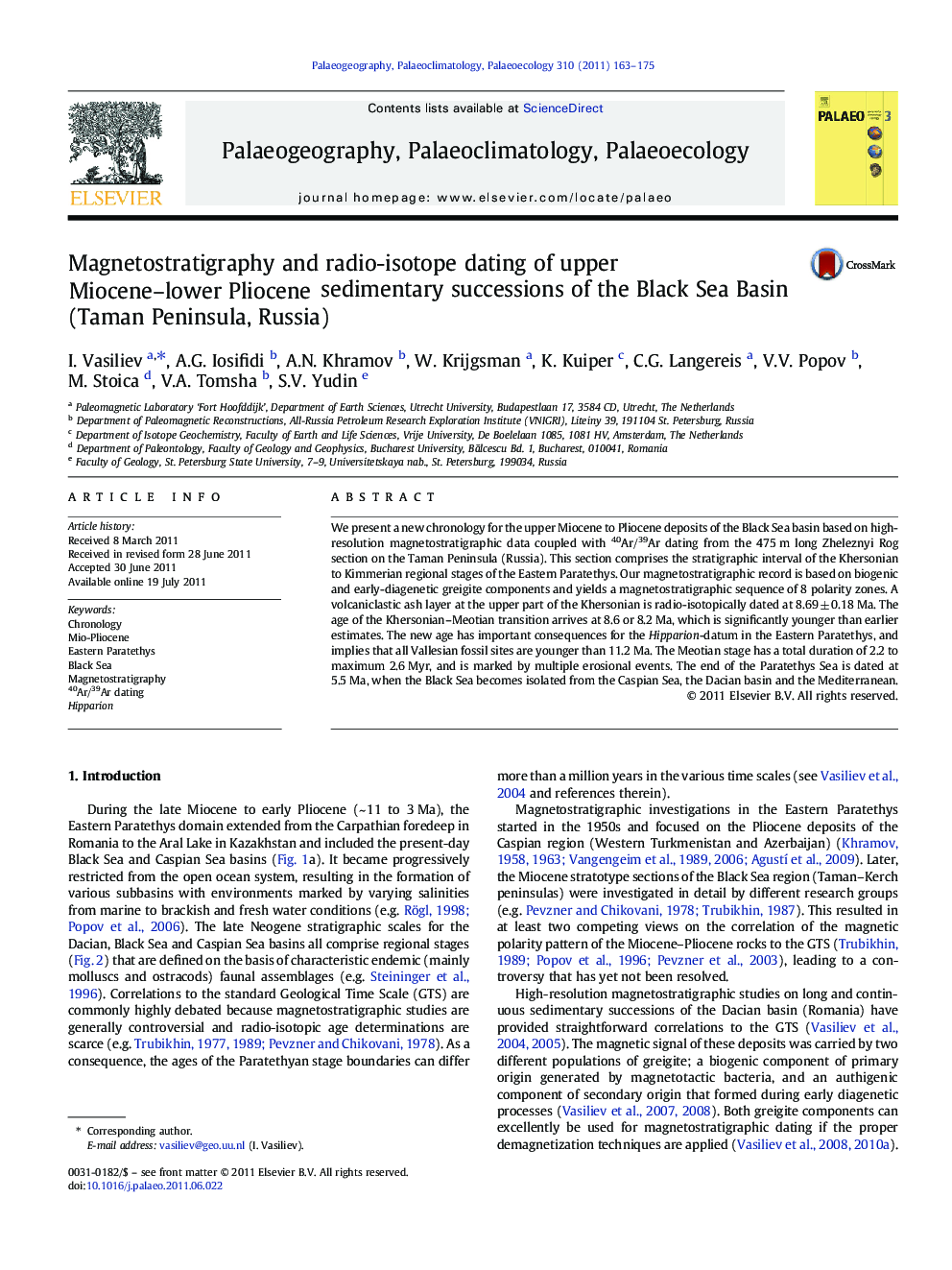| Article ID | Journal | Published Year | Pages | File Type |
|---|---|---|---|---|
| 4467095 | Palaeogeography, Palaeoclimatology, Palaeoecology | 2011 | 13 Pages |
We present a new chronology for the upper Miocene to Pliocene deposits of the Black Sea basin based on high-resolution magnetostratigraphic data coupled with 40Ar/39Ar dating from the 475 m long Zheleznyi Rog section on the Taman Peninsula (Russia). This section comprises the stratigraphic interval of the Khersonian to Kimmerian regional stages of the Eastern Paratethys. Our magnetostratigraphic record is based on biogenic and early-diagenetic greigite components and yields a magnetostratigraphic sequence of 8 polarity zones. A volcaniclastic ash layer at the upper part of the Khersonian is radio-isotopically dated at 8.69 ± 0.18 Ma. The age of the Khersonian–Meotian transition arrives at 8.6 or 8.2 Ma, which is significantly younger than earlier estimates. The new age has important consequences for the Hipparion-datum in the Eastern Paratethys, and implies that all Vallesian fossil sites are younger than 11.2 Ma. The Meotian stage has a total duration of 2.2 to maximum 2.6 Myr, and is marked by multiple erosional events. The end of the Paratethys Sea is dated at 5.5 Ma, when the Black Sea becomes isolated from the Caspian Sea, the Dacian basin and the Mediterranean.
► The paper provides new chronology for upper Miocene to Pliocene of Black Sea basin. ► Khersonian-Meotian transition arrives at 8.6 or 8.2 Ma. ► Khersonian-Meotian transition at least 1 Myr younger than earlier estimates. ► New chronology has consequences for the Hipparion-datum in Eastern Paratethys. ► Meotian, with duration of 2.2 to 2.6 Myr, is marked by multiple erosional events.
